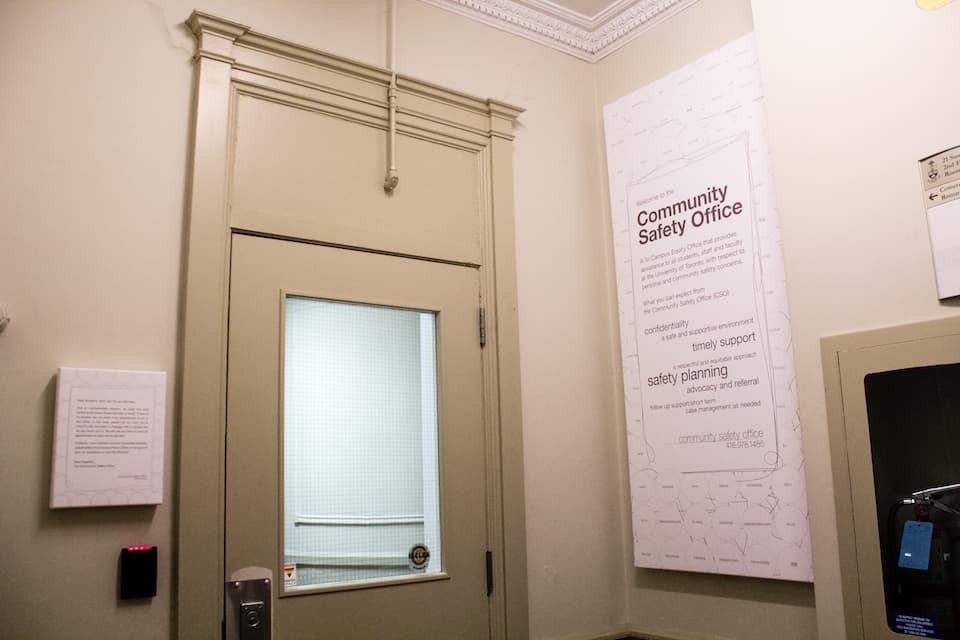The Committee on the Prevention and Response to Sexual Violence has published its final report. This comes 15 months after the committee was first struck in 2014.
The report’s major recommendations include: emphasizing the importance of correct language usage when discussing sexual violence; increasing and communicating the support available from the university, and the creation of a standalone policy and protocol on sexual violence. Increased university-wide education and training programs were also recommended.
“I think we are putting in this policy because this is an incredibly important issue for the university community,” said Sandy Welsh, U of T vice provost and committee co-chair. “It is there for students who have experienced sexual violence and who having the policy will give them the support and the direction that they need to have when they are wanting to come forward with a complaint.”
U of T has support structures and resources in place for those who have experienced sexual violence, but students have indicated that they are difficult to navigate.
“The first [issue] was the issue of language,” Welsh said. “The second was the issue around how we communicate what it is that we are doing here at U of T — how we communicate the services and the resources we have that are already in place. There are some quotes in the report from students who participated in the focus groups that show clearly where we need to do better in terms of communication. That’s why there are some recommendations around what we need to do to ensure that people can more easily navigate the systems that we have here.”
Alleged discrepancies in report
Celia Wandio, co-founder of U of T Student Coalition Against Sexual Violence, remains unsatisfied by the recommendations.
“Upon initially reading the report, I was happy they’d included a few things students had recommended, such as a regular campus climate survey and a sexual violence ‘centre,’” Wandio said. “However, the more I look into it the more I realize that the report could ultimately be ineffectual; it almost feels like a joke. They claim to have had meetings with groups who were totally excluded from the committee’s process, and their list of sexual violence ‘resources’ includes student groups that have not been active for years.”
Focus groups were held across campus in an effort to gather feedback from students. Discussion topics included the necessity of active bystanding — what to do when one is a witness to sexual violence. Language was another concern; students called for a broad and universally accepted definition of sexual violence.
“It views women as lesser, as objectified, as all these things, and it allows people to get away with it. It definitely needs to be addressed because sexual assault and rape is not about sex, it’s about power, it’s about control, it’s about dominance,” a UTSC student was quoted as saying in the report.
“Some people are suspicious that the reason a direct reference to students’ right to be safe on campus was removed from the final report was to protect the university from potential legal action, should such rights be compromised,” Wandio said. “This highlights the fact that while many members of the university’s administration are committed to addressing sexual violence, those who make the final decisions are still more concerned with protecting the institution’s reputation and financial interests.”
Not the end
The report mentioned the need for a standalone sexual violence policy and protocol, which would include a “comprehensive and user-friendly set of resources for complainants.”
“One of the important principles here was around the principle of procedural fairness for all parties, that means the respondent and the complainants, and that we have the appropriate procedural safeguards that are in place for both, especially when we are dealing with a complaint,” Welsh said.
Since the release of the report, U of T’s president and provost have been deliberating about possible next steps.
“There are commitments to consult with students, including and especially those who face disproportionate levels of sexual violence, but there is no guarantee they will follow through with this promise,” Wandio said. “There are no timelines, and one of the biggest things they need to do — which is to create a comprehensive policy to adjudicate claims of sexual violence — is barely addressed in the report, despite all the information available about best practices in developing such policies.”
“The president has said that he sees this not as the end, it’s really the beginning,” Welsh said. “This report, I think the committee felt, very strongly, was that this report is the first step and there is a lot more work to be done.”
Students may send feedback on the report to [email protected].
Correction (February 8, 2016, 5:09 pm): A previous version of this article incorrectly stated that the Committee on the Prevention and Response to Sexual Violence first convened in 2014. In fact, the committee was announced in November 2014 and first met in January 2015. The Varsity regrets the error.


